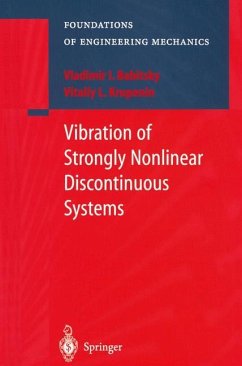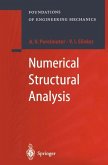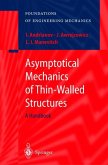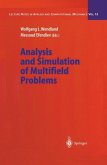Among the wide diversity of nonlinear mechanical systems, it is possible to distinguish a representative class of the systems which may be characterised by the presence of threshold nonlinear positional forces. Under particular configurations, such systems demonstrate a sudden change in the behaviour of elastic and dissipative forces. Mathematical study of such systems involves an analysis of equations of motion containing large-factored nonlinear terms which are associated with the above threshold nonlinearity. Due to this, we distinguish such discontinuous systems from the much wider class of essentially nonlinear systems, and define them as strongly nonlinear systems'. The vibration occurring in strongly nonlinear systems may be characterised by a sudden and abrupt change of the velocity at particular time instants. Such a vibration is said to be non-smooth. The systems most studied from this class are those with relaxation (Van Der Pol, Andronov, Vitt, Khaikhin, Teodorchik, etc. [5,65,70,71,98,171,181]), where the non-smooth vibration usually appears due to the presence of large nonconservative nonlinear forces. Equations of motion describing the vibration with relaxation may be written in such a manner that the highest derivative is accompanied by a small parameter. The methods of integration of these equations have been developed by Vasilieva and Butuzov [182], Volosov and Morgunov [190], Dorodnitsin [38], Zheleztsov [201], Mischenko and Rozov [115], Pontriagin [137], Tichonov [174,175], etc. In a system with threshold nonlinearity, the non-smooth vibration occurs due to the action of large conservative forces. This is distinct from a system with relaxation.
From the reviews of the first edition: "This is a very useful book for the analysis of vibro-impact systems. It is written in the great Russian tradition of mechanics entwined with mathematics, but the fundamental introductions of the chapters always lead to explicit calculational schemes. ... As a whole this book is a good introduction to a very important part of engineering mathematics." (Ferdinand Verhulst, SIAM Reviews, Vol. 45 (2), 2003) "This book deals with periodic vibrations of strongly nonlinear dynamical systems, with special attention to mechanical systems with impacts, which are investigated for their own relevance and as approximations of other strongly nonlinear systems. ... The book is well organized and the arguments are illustrated in a sequential and logical order." (Meccanica, Vol. 39, 2004) "In this book, first published in Russian, analytic approaches are presented for the description of strongly nonlinear mechanical systems with the solution of non-linear second order differential equations arising in leading to time-periodicity of the coefficients in the different equations. ... The text is fluent and well illustrated." (European Journal of Mechanical and Environmental Engineering, Vol. 47 (4), 2002/2003) "This book investigates vibrations of nonlinear mechanical systems characterized by the presence of threshold nonlinear positional forces. ... In the reviewer opinion, the book presents many original solutions of dynamical problems for strongly nonlinear systems, and thus may be considered as a first systematical description of the theory of vibrations of strongly nonlinear systems with lumped parameters." (Yuri N. Sankin, Zentralblatt MATH, Vol. 997 (22), 2002)









